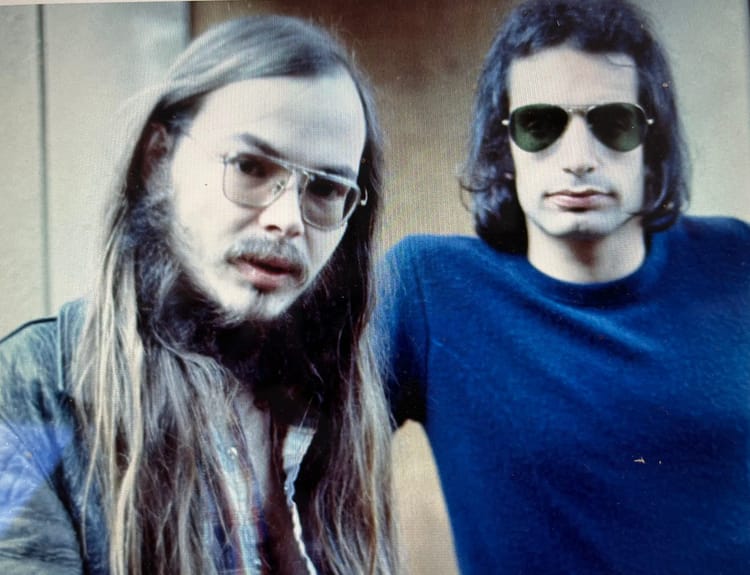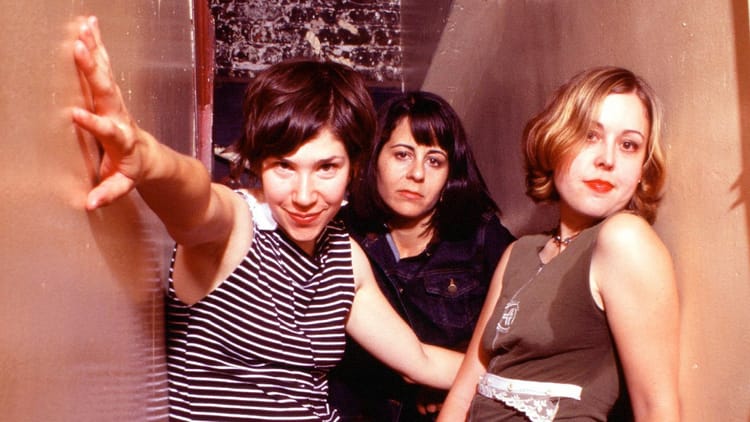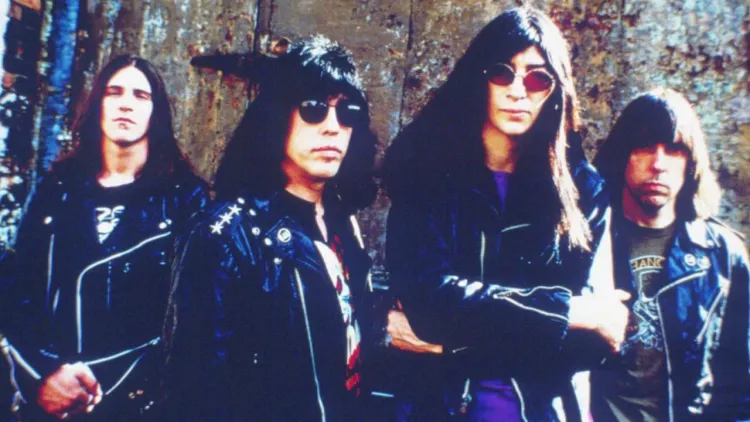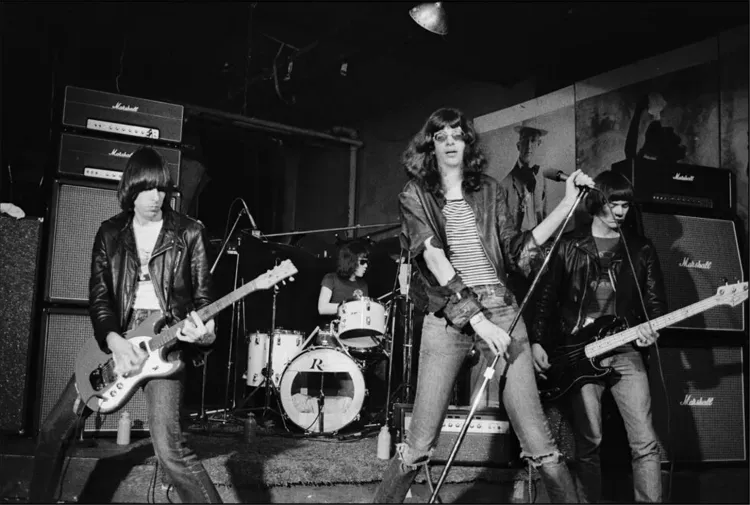Bob Dylan, pt. 2: Anthony's Album Guide

GLIB XENNIAL CONTENT WARNING: If you are the kind of fan/scholar/chore who resents anything less than hushed awe when discussing the Nobel laureate who wrote "Wiggle Wiggle," please proceed with caution and humor. I promise you his legacy will survive this.
Part 1 is here. My handy dandy profoundly subjective numerical rating scheme is explained here.
Self-Portrait (1970) 5
New Morning (1970) 6
Bob Dylan’s Greatest Hits Volume II (1971) 5
Pat Garrett & Billy The Kid (1973) 5
Dylan (1973) 4
Planet Waves (1974) 6
Before The Flood (1974) 9
Blood On The Tracks (1975) 9
The Basement Tapes (1975) 8
Desire (1976) 7
Hard Rain (1976) 4
Street-Legal (1978) 8
Bob Dylan At Budokan (1978) 3
Over the course of the 1960s, Bob Dylan had gone from folk music’s great white hope to popular music’s most hailed singer-songwriter. He was the keeper of the flame and the roguish future of rock. A talent so huge and undeniable, he represented the baby boom’s political and sonic challenge to earlier generations, while posing a challenge to the baby boom itself, dramatically evolving his sound and loading his albums with cryptic, literary riddles and ruminations. He was Superman - an otherworldly alien representing the American ideal. He was Jesus - condemned and crucified for revealing the possibilities of love and the failures of man. He was born old and younger than that now, the inspirational hero of the hippies and yippies despite spending those summers of love & war recording basement tapes and hiding in upstate New York with his wife Sara, their five children, and a handful of erudite Canadian vest enthusiasts.
Though Dylan was playing with Nashville country in 1969, crooning ballads like a proto-Kermit with Johnny Cash, dozens of post-Dylan rock acts and hundreds of thousands of freaks drove to upstate New York for three days of music and fucking in his metaphorical backyard. Staying indoors despite the noise, Dylan and the Canadians instead played England a week later, a legendary return to the stage almost missed because one of his kids bonked their head on the Queen Elisabeth II.
Bob & The Band wrapping up the '60s at The Isle of Wight Festival.
With fans that kid’s age and younger excited to hear what Dylan might spontaneously cover in an unpredictable voice on stage today, it’s hard for the non-elderly to appreciate the fury and disdain that met Self-Portrait upon release. But if you think about all the classic music arriving monthly if not weekly at the time, plus the draft and everything else they showed in Forrest Gump, you can see why nerds would hate Dylan responding to all that screaming and fucking with a double record of schmaltz standards, live outtakes and junk. “Blue Moon,” followed by “The Boxer” (Bob double-tracking as Simon and Garfunkel), followed by a live “Quinn The Eskimo." On Side Three. In the age of umpteen archival releases, we're gifted this every other Friday. But in the summer of ’70, nothing but Nashville Skyline released over the last two and a half years (a very busy two and a half years for rock culture), calling this clump of oddities Self-Portait added insult to embarrassment. Personally, I don’t love anything on it, but I don’t hate anything either. At least until back-up singers open Side 4 with a clumsy “Take A Message To Mary.” Today, Self-Portrait is just another half-intriguing bucket of chaff from a guy who put out crates of the stuff.
Whether or not New Morning was rushed out four months later to make up for Self-Portrait (something Dylan denies), that’s certainly the role it served. The modest, amiable album relieved critics and fans who worried their generational avatar had forgotten how to make a coherent musical statement. The recording was contentious enough to end multiple professional relationships, but it sounds like familiar, competent Dylan product today. This is actually kind of funny when you remember such a thing didn’t really exist at the time - Blonde On Blonde business with a little of John Wesley Harding’s archness and Nashville Skyline’s balladry thrown in. “If Dogs Run Free” even adds jazz to the mix! Bloated at just 35 minutes, I can name several dozen singer-songwriter albums by Dylan fans from the period I enjoy more (don’t forget those erudite Canadians, now out on their own!). But fans were understandably thrilled the OG could at least hang.
If you got this to #33 in 1971, you'd hate "Heart Of Gold" reaching #1 in 1972, too.
Looking for new collaborators, Dylan spent 1971 knocking out some tracks with Leon Russell, as was the style at the time. Neil Young fans might be startled by the familiar harmonica solo in the now-obscure single “George Jackson” (though soon a fan of that Canadian, Dylan was annoyed by the lunch-eating success of Harvest). The admittedly repetitive “Jackson” was left off Bob Dylan’s Greatest Hits, Vol. II, a jumble of undefinitive basement tape re-recordings with Russell, and hits released before and after the first volume. I’ve docked it a point for chronological juxtapositions (“Don’t Think Twice, It's All Right” between “Watching The River Flow” and “Lay Lady Lay”?) that suggest the zing “he was so much smarter then, he’s dumber than that now.”
Daddy Dylan didn’t put out shit in 1972, but ended the year working with director Sam Peckinpah, another guy who couldn’t catch a break and liked to make art about guys who couldn’t catch a break. Dylan played “Alias” in Pat Garrett & Billy The Kid, which I probably tried to watch sometime in my twenties. He also recorded the soundtrack, which features “Knockin’ On Heaven’s Door” and several instrumentals a philosophical cowboy would be proud to bleed out to in the desert sun. I hope to go quick, though. Somewhere shady, with a nice breeze.
Dylan, showing just how easy acting isn't, in Pat Garrett & Billy The Kid.
Still looking for artistic inspiration, Dylan left Columbia Records in 1973 and joined the coterie of fans and acquaintances on David Geffen’s Asylum label, promising a new album and tour with the erudite Canadians, now called The Band, in 1974. Columbia responded by releasing Dylan the preceding November, an album of covers that were deemed unworthy of inclusion on Self-Portrait and New Morning. Tracks include “Big Yellow Taxi” and “Mr. Bojangles,” both with soul sisters in the background. My ex-mother-in-law asked me to chase down his version of “Can’t Help Falling In Love” before the album’s 2013 reissue, and it’s the only time I’ve seen a human acknowledge Dylan's existence. “A Fool Such As I,” a rare bit of Dylan kitsch you can dance to, would be fun to blast when you’re the least hungover guy in the morning after an all-night bro-down.
It took me years to even slightly appreciate Planet Waves, as the trick was to ignore Dylan entirely. It’s The Band that makes this thing memorable, if anything does, as their funky confidence and layered attack is never more easy to appreciate than when divorced from leader Robbie Robertson’s starchy, anthropological mission. Considerably less practiced than those road dogs, who'd put five albums under their belt since their last tour with Dylan and those legendary Basement Tapes, Bob settles for yelling atop the swirling stew of Americana, either too indifferent or too inept to pull focus. Die-hards praise “Dirge,” a piano number where Bob mourns corrupting his light with your bullshit, referencing “Suicide Road,” “Lady Luck” and the “Doom Machine” as Robbie solos beside him. Ew. Never tell Rick, Garth, Richard and Levon to take five.
This live '74 clip has far worse sound than Before The Flood, but lets you see the brown suits and sunglasses. Glam!
Though hype gave Planet Waves huge pre-orders, it was the tour everybody turned up for. This was Dylan’s first cross-country jaunt since Blonde On Blonde, and the first time boomers got to express retrospective pride in their cultural footprint. It could have been a nightmare, but the songs were strong enough to keep him from drowning in The Band’s expertly reckless arena boogie, or drowning The Band with all that hollering. And any time the Dylan concert stops, a Band concert starts. Most live albums pale to studio recordings of the same material. A rare few show them up. Before The Flood is its own beast entirely, featuring wild and vital interpretations of chestnuts brimming with the grandeur of collective memory. I actually enjoy the audience cheering “how does it feel?” like the answer is “I’m going to Disneyland!”
Columbia Records honcho Clive Davis was so distraught to miss out on this nostalgia bonanza that he basically offered a blank check for Dylan to come home. Ironically, Dylan found the whole thing to be a sad joke. His disdain for obvious rocking and taking victory laps was dignified by the personal drama going on offstage. Whether it was the stress of renovating a house in Malibu, raising five kids, Sara not caring about Bob’s interest in fine art, or Sara caring about Bob’s new girlfriend, his marriage was on the ropes and weighing on Dylan’s mind. And it was inspiring some great tunes.
A flashforward from Hard Rain, with the meanest song on Tracks.
While pre-’67 Dylan is my favorite Dylan, Blood On The Tracks is my favorite Bob Dylan album. A new way of writing, inspired by his art studies, met a new thing to write about: the pain of a great love getting away from you, despite the intensity of emotion it still inspires, and painful continued physical proximity of that partner. However real the experiences may or may not be, the romantic portraiture is unprecedentedly arresting and subtly tragic, dwelling on the details as if that will keep them from fading. The folk-rock arrangements are intentionally casual, if not generic, to keep the focus on the imagery. In my early 20s, after the end of my first relationship, I would actively get upset if someone tried to play Tracks in my presence. I didn’t need eloquent reminding of what the initial stages of grief were. Today, fresh cuts now fading scars, the album’s intimacy and emotional depth continues to demand quiet appreciation.
Dylan, still married, swore Tracks wasn’t explicitly autobiographical. This might be why he pulled a quick U-turn, melding his ‘60s protest mode with his early ‘70s arena mode for an 8-minute protest of Rubin “Hurricane” Carter’s wrongful imprisonment for murder. Fellow former folkies were thrilled that racist state violence had Dylan cursing with fury, and the sound was Before The Flood on his own terms: a loose, folk-rock jamboree free to pull focus, but not schooled enough to upstage him. He and his new band hit the road for the Rolling Thunder Revue, joined by every homie who’d accept the invitation.
Let's allow the most erudite of those Canadians, MC Robbie Rob, to explain The Basement Tapes for himself.
As if Blood On The Tracks in early 1975 and “Hurricane” at the end wasn’t enough to get the cult excited for the tour, those outside the bootleg scene got their first taste of what Bob & The Band were doing upstate back in 1967 with the release of The Basement Tapes that June. I’m talking about the album in this post instead of the previous because The Band not just added overdubs, but re-recorded Robbie Robertson copyrights. A third of the double album doesn’t even feature Dylan. The “complete” set of over 100 Dylan “basement” songs is now on a 6-disc box set, and I might throw it on after I’m done writing this thing. But I enjoy the 1975 release as a funhouse of meta-nostalgia, Robbie & company remembering riffing on the long past in the recent past, finding their sound from a place of privilege and pleasure with their generation’s songwriting hero, lightyears from the polished, pro boogie of Planet Waves. According to gainfully employed academics, the songs not by erudite Canadians are a magical cipher one can use to unravel the secret history of America, but that’s none of my business.
Recorded before the first leg of the Rolling Thunder Revue and released before the second, Desire, a bunch of narratives co-written by playwright Jacques Levy, successfully rides “Hurricane”’s boisterous spirit for the first side. But a subtext of pitiful insecurity overwhelms the B. “Joey,” a bullshit elegy mythologizing a real-life mobster, undercuts “Hurricane”’s righteousness. “Romance In Durango” doubles down on the dubious romantic tourism of the wryer “Mozambique.” The climactic “Sara,” a shockingly maudlin memoir, reveals the cause for this clumsy overcompensation: Dylan was trying to remind his estranged wife what an exciting, debonair, misunderstood man she had in him. There were bigger, less enjoyable misfires before, but Desire is the first album I find more embarrassing for him than his acolytes.
Before Robin Thicke's Paula...there was Bob Dylan's "Sara."
Further evidence of an ego in romantic crisis was found during the Revue, where Bob regularly wore white facepaint and filmed improv scenes backstage with Sara, folk-era paramour Joan Baez, duet partner Ronnie Blakely, violinist Scarlet Rivera, and a bunch of wingmen who knew Dylan couldn’t spend the night with all those ladies. If the film Renaldo and Clara lived up to its cast credits (Harry Dean Stanton as Lafkezio! Bob Neuwirth as The Masked Tortilla!), it would probably be a lot easier to see. I have no doubt the archives are loaded with great performances from the tour, and there’s a 14-disc box of 1975 recordings if you want to explore. But Hard Rain, nine tracks from May ’76, right before the Revue wrapped up, has all the pat arena cliches Before The Flood transcends.
Though Blood On The Tracks captures the pain of isolation after serious adult heartbreak, by 1977 Dylan was going through a divorce. A divorce involving past & future income adding up to millions of dollars, custody of five children, plenty of real estate, and other things your average twenty-three-year-old Blood On The Tracks fan knows nothing about. The poignant displays of perspective, the romantic travelogues, the half-assed attempt to make her a movie star, the whole of the rock community kissing his ass in The Last Waltz...he offers all this, and he still winds up in meeting after meeting with lawyers while Sara threatens to move the kids to Hawaii (the one state where she could hope to get away from Dylan’s America and erudite Canadians). Plus, despite months in the editing room, no one off the payroll seemed to think he’s the new Fellini after watching Renaldo & Clara. Philistines!
Bob and a band, screaming it out in 1978. Glam!
Where Desire was a blueprint for a fun & sexy folk carnival, albeit a desperate, delusional one, 1978’s Street-Legal was a lot of cranky hectoring about being tough and unappreciated, recorded with a band intended to pay tribute to the newly dead Elvis Presley. Not thin Elvis, though. Fat Elvis. Bob wanted showbiz. Maybe to remind people he was Boomer Super-Jesus. Maybe to mock audiences for buying such an idea. Or maybe to mock himself. And fuck you for asking anyway, philistine!
Obviously, an album where a recent divorced dad facing forty screams “Memory! Ecstasy! Tyranny! Hypocrisy!” alongside female back-up singers who just got the lyric sheet the day before, isn’t for everyone. But I file it along with Lou Reed’s Take No Prisoners and Neil Young’s On The Beach (ok…Landing On Water) as cathartic displays of a rock auteur too pissed off to care if this stuff is flattering him. On the front cover, Dylan's some sloppy rando in poorly fitting clothes waiting for his ride. On the back, he’s on stage, looking like the ghoulish offspring of Alice Cooper and Neil Diamond. On the disc, both sides of the man find common ground. Thumbs up.
Tragic irony - the guy playing that excruciating flute solo throughout the Budokan "Mr. Tambourine Man" was in The Wrecking Crew. Maybe Dylan thought it was a shame the Byrds left him out?
My ironic tastes and sympathy for grumps has limits, though. Bob Dylan At Budokan is two discs of cheeseball arrangements of his greatest hits, recorded months into a world tour. The piss and vinegar of Street-Legal has been replaced by flutes, congas, wakachika…there might even be a slide whistle or car horn going “arooga” that I missed while disassociating. The expanded version released in 2023 is a mere four discs instead of fourteen, proof of how much it sucks. Also proof: instead of taking this self-parody to Vegas, Dylan decided he wasn’t actually Jesus, and that he’d devote his life to praising the real guy.
Out of respect for his being born again, I’m ending the ‘70s overview here, and saving Slow Train Coming for a pt. 3 I’m in no rush to start. Full disclosure: the only album after Street-Legal I currently own is World Gone Wrong, a brief set of solo acoustic folk covers from 1993 that nicely bookends his debut. I realize that’s a challenging opinion for the erudite and/or Canadian who adore what he’s recorded since his untimely death from a heart attack in 1997. Much has been made of the ongoing “Endless Weekend At Bernie’s" tour, which has been improved over the years by advancements in hologram and AI technology, allowing fans to imagine how the late Dylan would react to modern novelties like Facebook and Lorde. The occasional technological glitch - a brief Billy Joel cover or a mustache, for instance - just adds to the madcap unpredictability that deluxe reissue buyers under 40 wish they could have experienced for themselves. I reserve the right to change my stance on the last forty years of albums (and the year of his demise) upon further investigation, or after I'm visited by the ghosts of three Hawks on Presidents' Day Eve. But don’t hold your breath.
If you need to believe Dylan lived to be upstaged by a meth-crazed Pauly Shore stand-in, that's on you.
Blood On The Tracks is at 86 on My Top 300 Favorite Albums of All Time, and Before The Flood is at 179. I'm telling you this because I've found people are more inclined to discuss and share reviews if there's a quantitative element at the top or bottom they can easily debate. Prove me right!
All outrage at my irreverence should be sent to Timothy Chardonnay, star of the upcoming biopic A Siamese Cat, so it can inspire him to make a sequel and visit elementary schools in character to promote Dylanology. Everything else can go to anthonyisright at gmail dot com.




